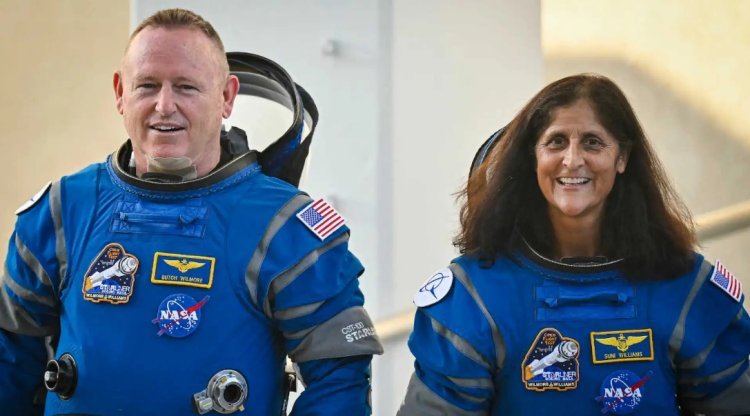Sunita Williams to Return to Earth in February 2025 with SpaceX: NASA
Sunita Williams, August 24, 2024 – NASA has confirmed that astronaut Sunita Williams will return to Earth in February 2025 aboard a SpaceX Dragon spacecraft. This news was announced on August 24, 2024, during a press briefing by NASA Administrator Bill Nelson. Williams, who has been aboard the International Space Station (ISS) since June 2024, will return with fellow astronaut Butch Wilmore.

The decision to extend Williams and Wilmore's stay on the ISS until February 2025 comes after issues were detected with Boeing's Starliner spacecraft, which was initially planned to bring them back. The Starliner experienced problems with its propulsion system, making it unsafe for a crewed return. As a result, NASA decided to proceed with an uncrewed return flight for the Starliner capsule, allowing more extensive testing while keeping the astronauts safe
Extended Stay on ISS
Sunita Williams and Butch Wilmore have been integral members of the ISS crew since June 2024. They were originally scheduled to return on Boeing's Starliner as part of a crucial crewed flight test. However, NASA's safety protocols took precedence, leading to the decision to keep the Starliner uncrewed for its return to Earth
The astronauts have been actively involved in various scientific experiments and maintenance tasks on the ISS during their extended mission. NASA officials have emphasized that despite the longer stay, the ISS is well-stocked with supplies, and the astronauts are in good spirits. The decision to keep them aboard for an extended period is not unprecedented, as astronauts have previously spent up to a year on the ISS without significant issues
Why SpaceX?
NASA's decision to use a SpaceX Dragon spacecraft for Williams' return underscores the agency's confidence in SpaceX's proven track record. The Dragon spacecraft has successfully completed numerous crewed missions to and from the ISS as part of NASA's Commercial Crew Program. This program, which also includes Boeing's Starliner, aims to ensure reliable and cost-effective transportation for astronauts
SpaceX has become a critical partner for NASA, especially following the retirement of the Space Shuttle program in 2011. Since then, SpaceX has completed nine crewed missions to the ISS, with the upcoming Crew-9 mission, which Williams will join, marking the tenth. The Crew-9 mission is currently scheduled to launch in September 2024, just before the Starliner's uncrewed return
The Future of NASA’s Crew Programs
NASA remains committed to ensuring that both Boeing and SpaceX continue to play vital roles in its crewed spaceflight missions. While Boeing's Starliner has faced challenges, NASA officials, including Administrator Bill Nelson, have expressed confidence that these issues will be resolved. The agency is keen on having multiple options for transporting astronauts, which is essential for maintaining flexibility and safety in space missions
NASA's Commercial Crew Program, launched in 2014, awarded contracts to both SpaceX and Boeing, aiming to encourage competition and innovation in the space industry. While SpaceX has taken the lead with its Dragon spacecraft, NASA and Boeing are working closely to ensure that Starliner meets all safety standards before it is cleared for future crewed missions.
Looking Ahead
As Williams and Wilmore prepare for their return in early 2025, the focus remains on safety and the successful completion of their mission aboard the ISS. Their extended stay, though unexpected, is a testament to NASA's rigorous safety standards and its ability to adapt to unforeseen challenges.
Sunita Williams, a veteran astronaut with Indian-American roots, has already made history with her accomplishments in space. Her upcoming return will mark another significant milestone in her illustrious career, further solidifying her legacy in space exploration.
NASA and its partners will continue to monitor the situation closely, ensuring that Williams and her fellow astronauts return safely to Earth. The journey back, now set for February 2025, will once again highlight the critical role of international collaboration and technological innovation in human space exploration.













